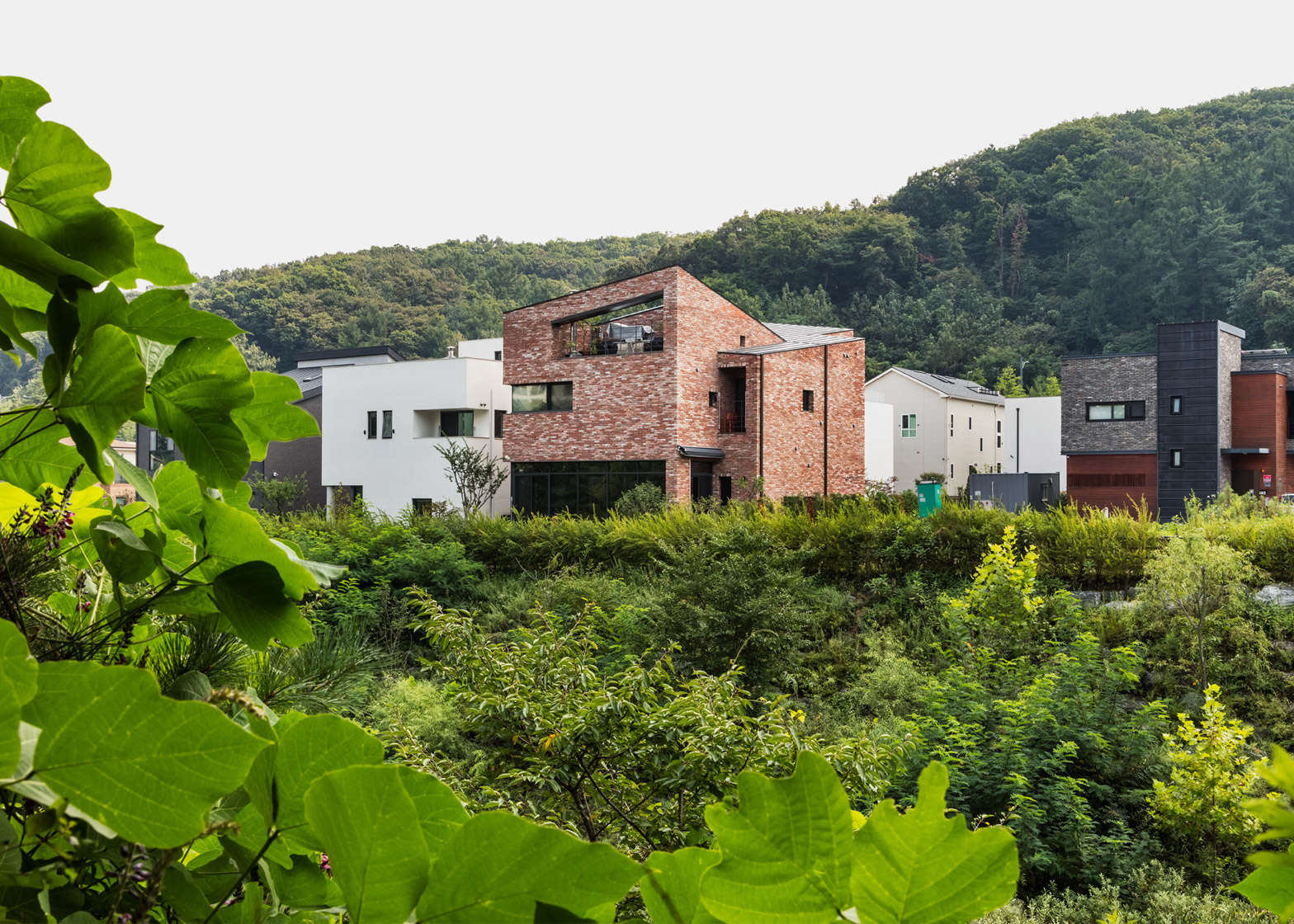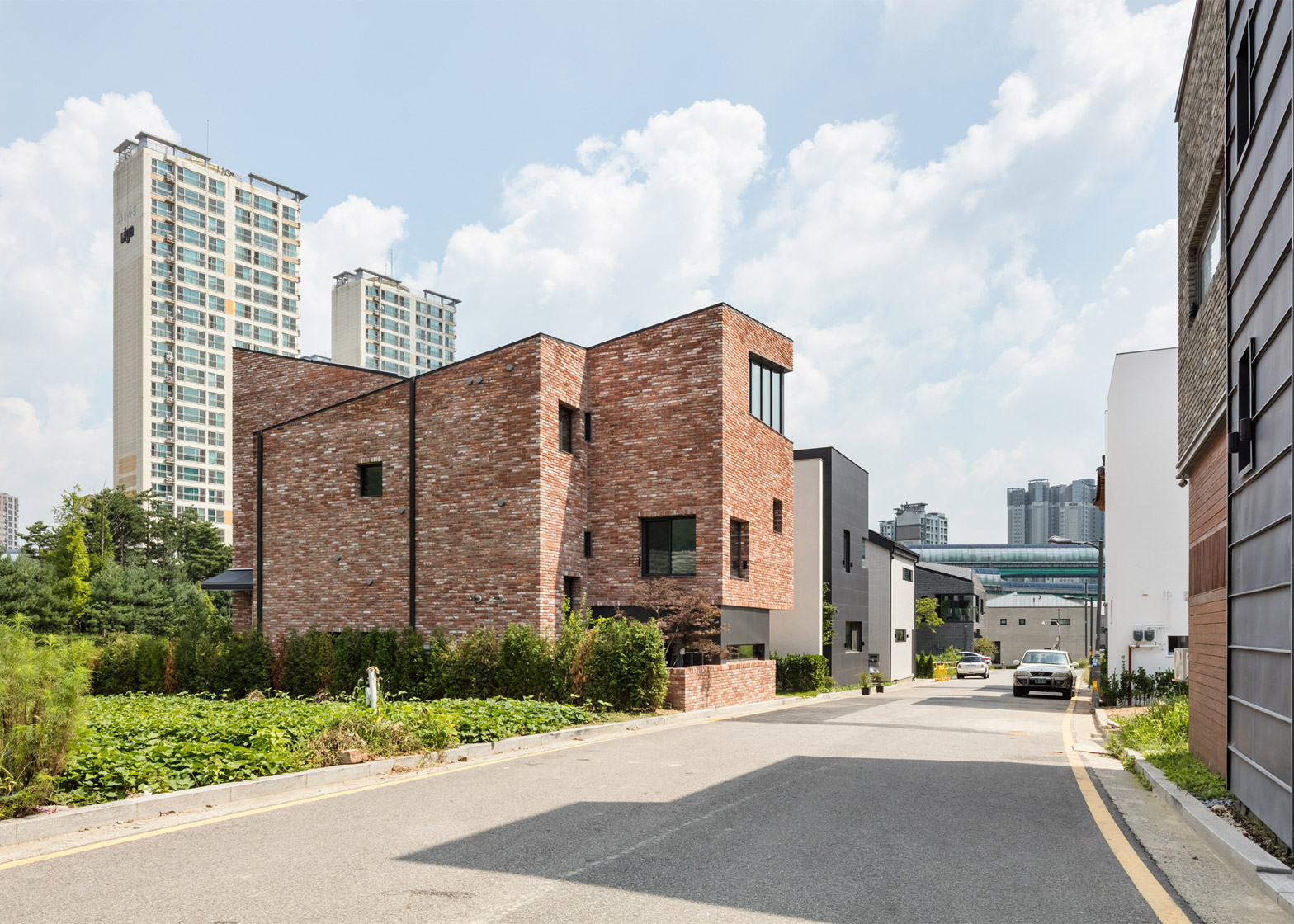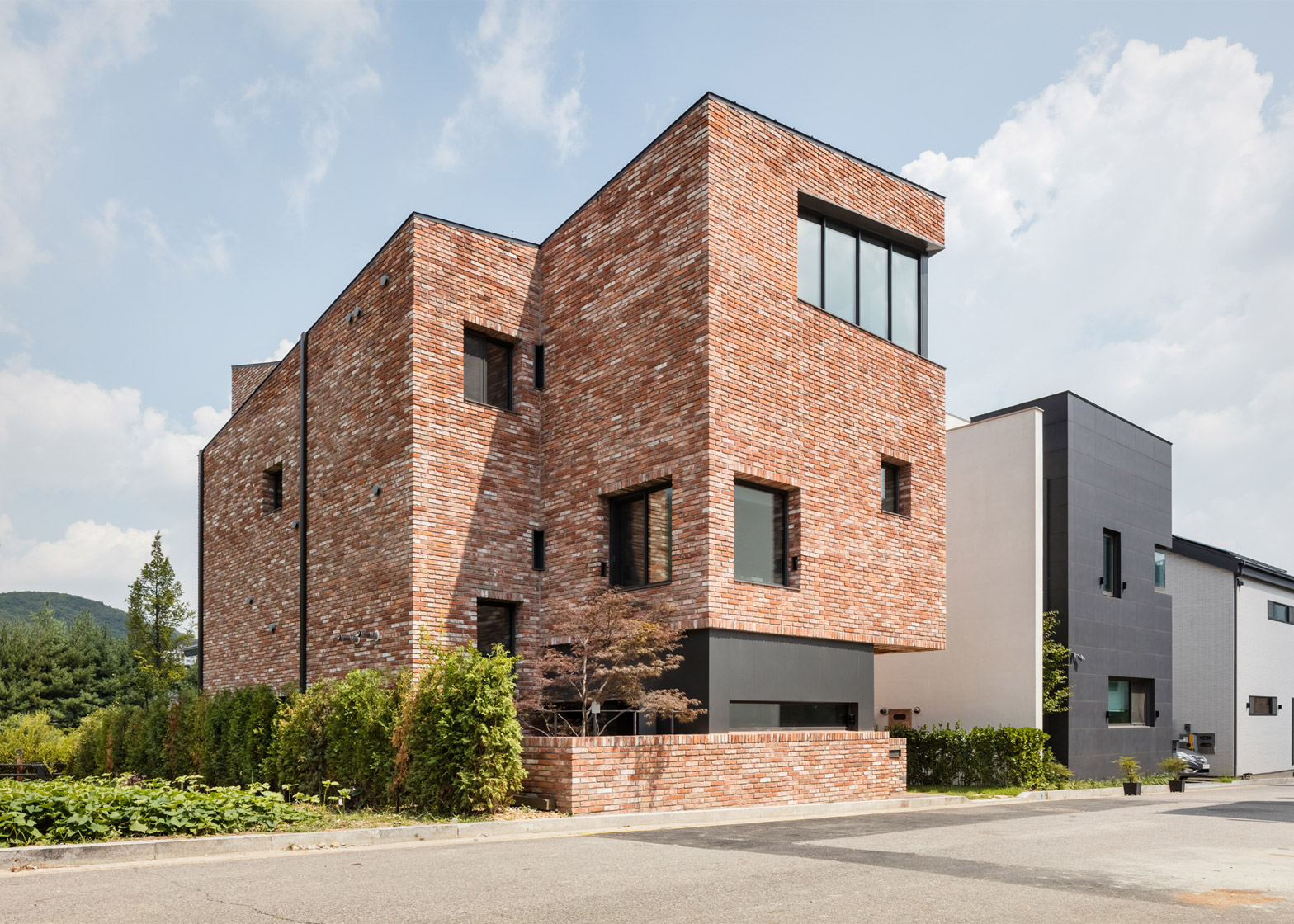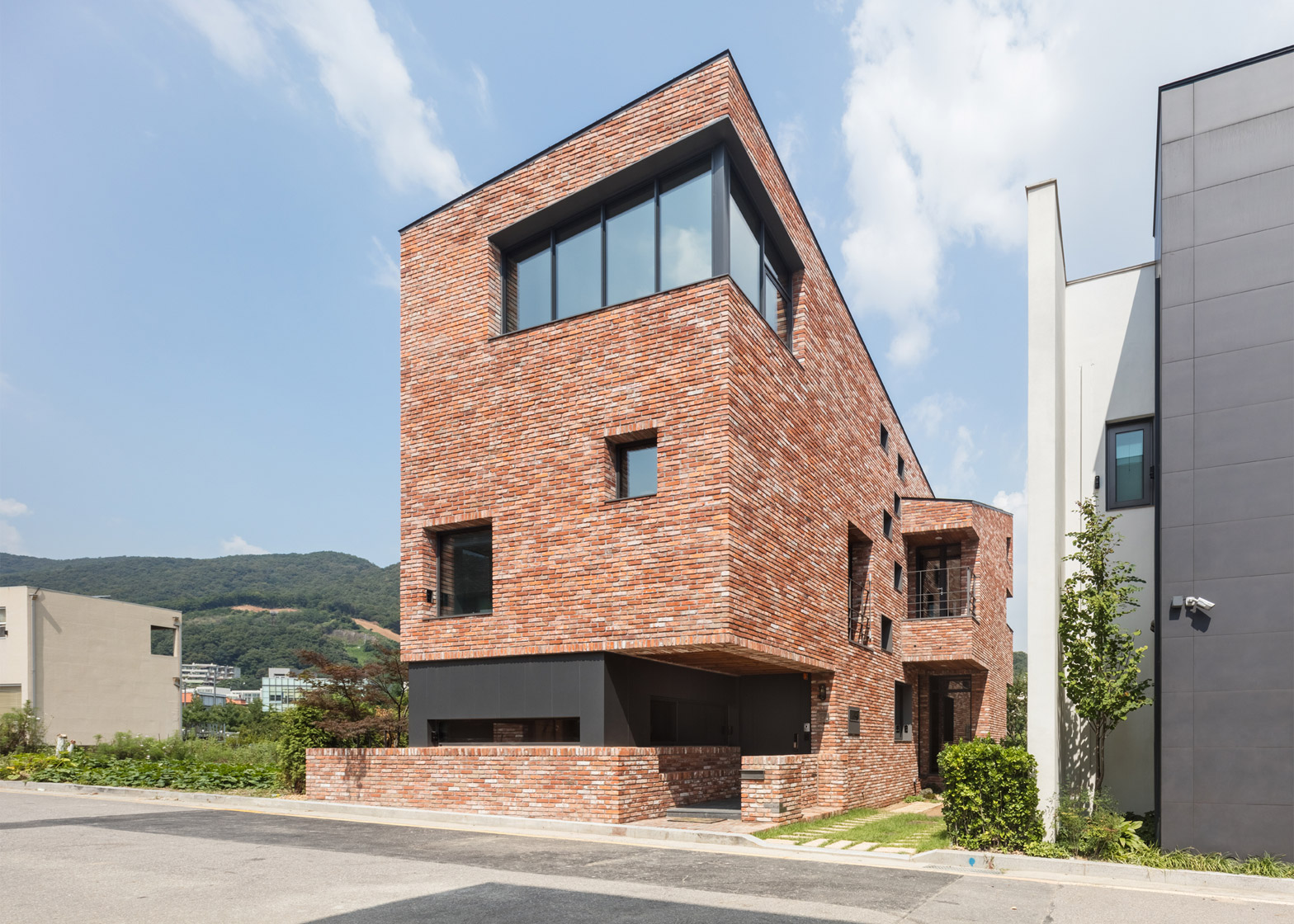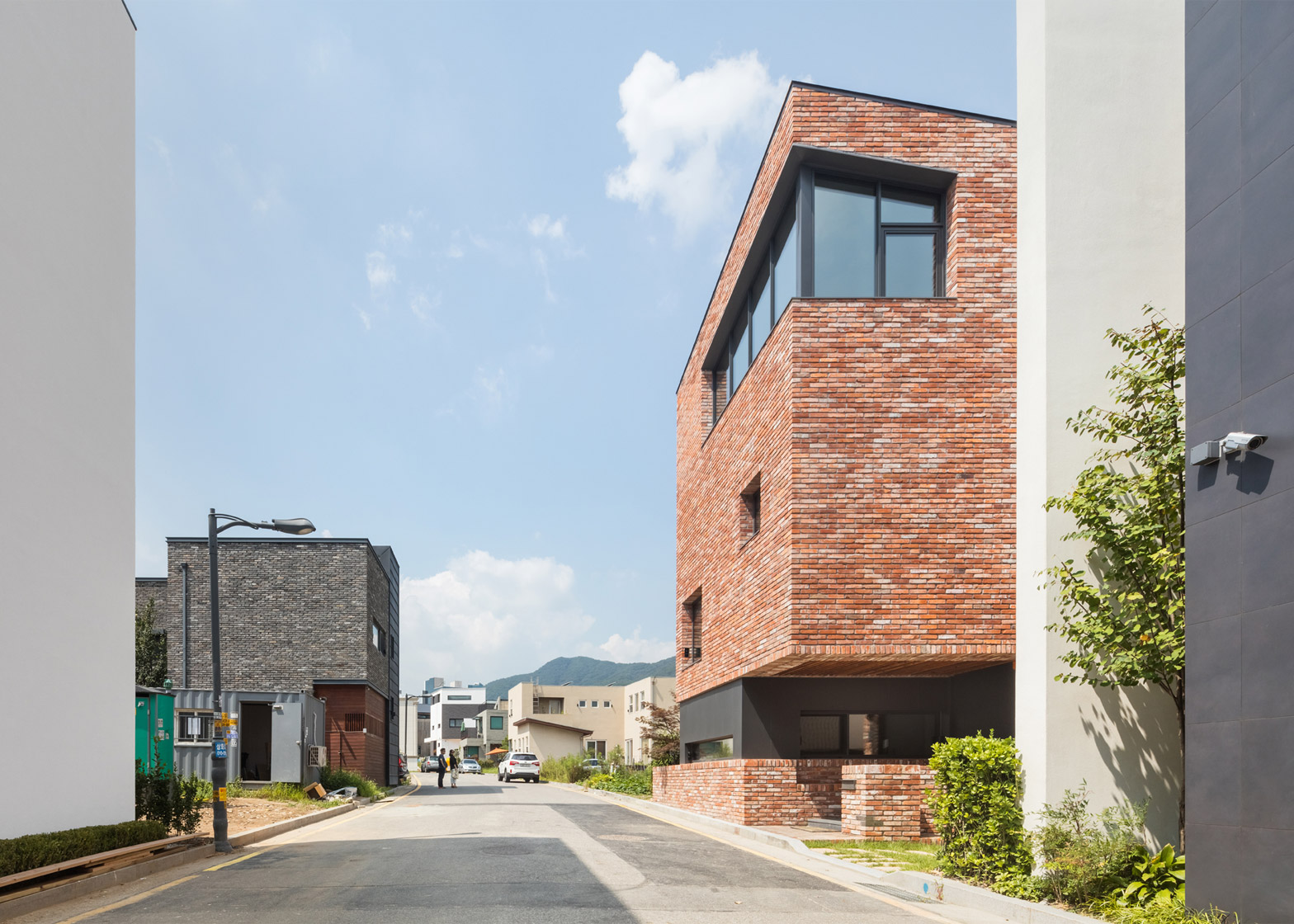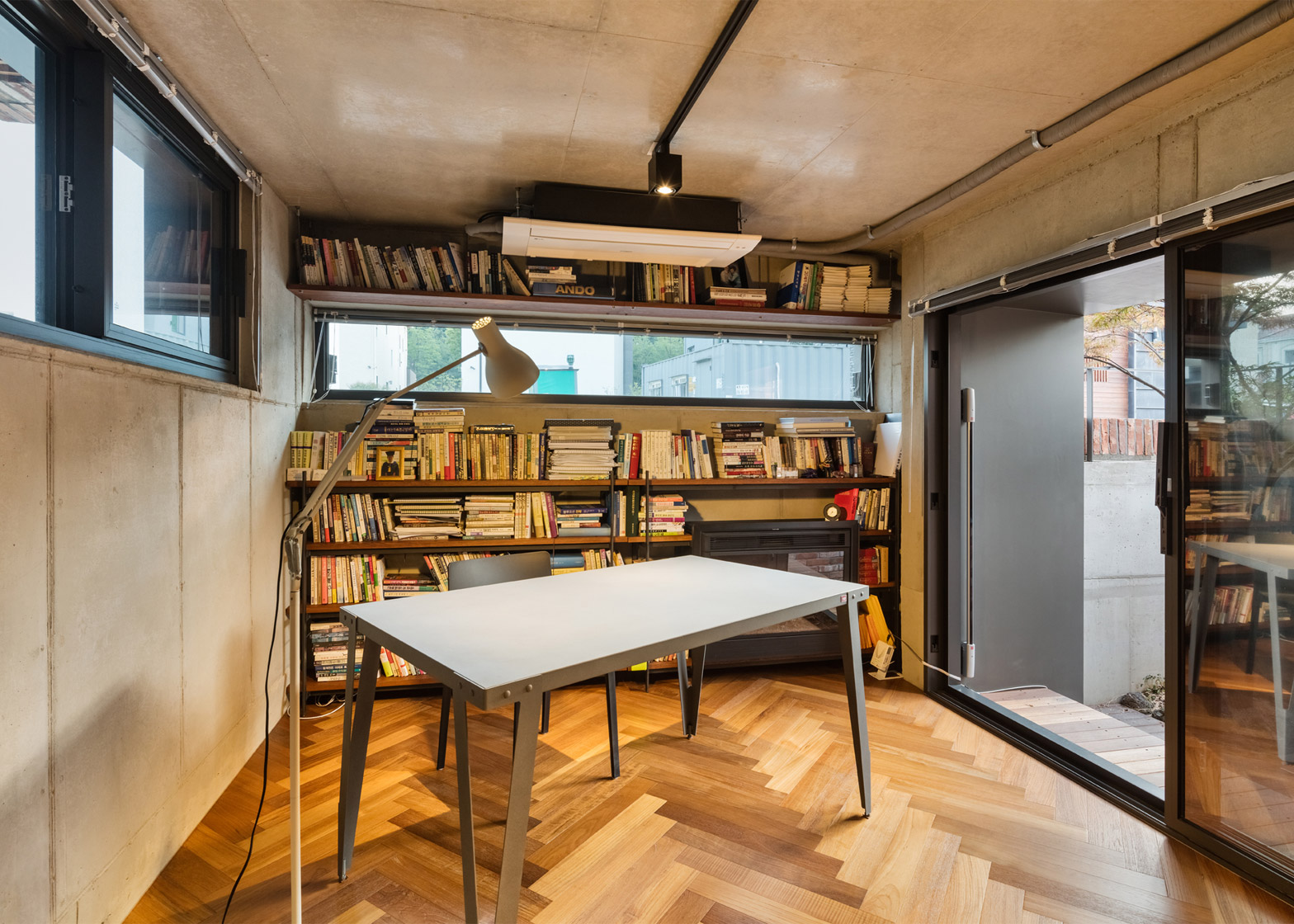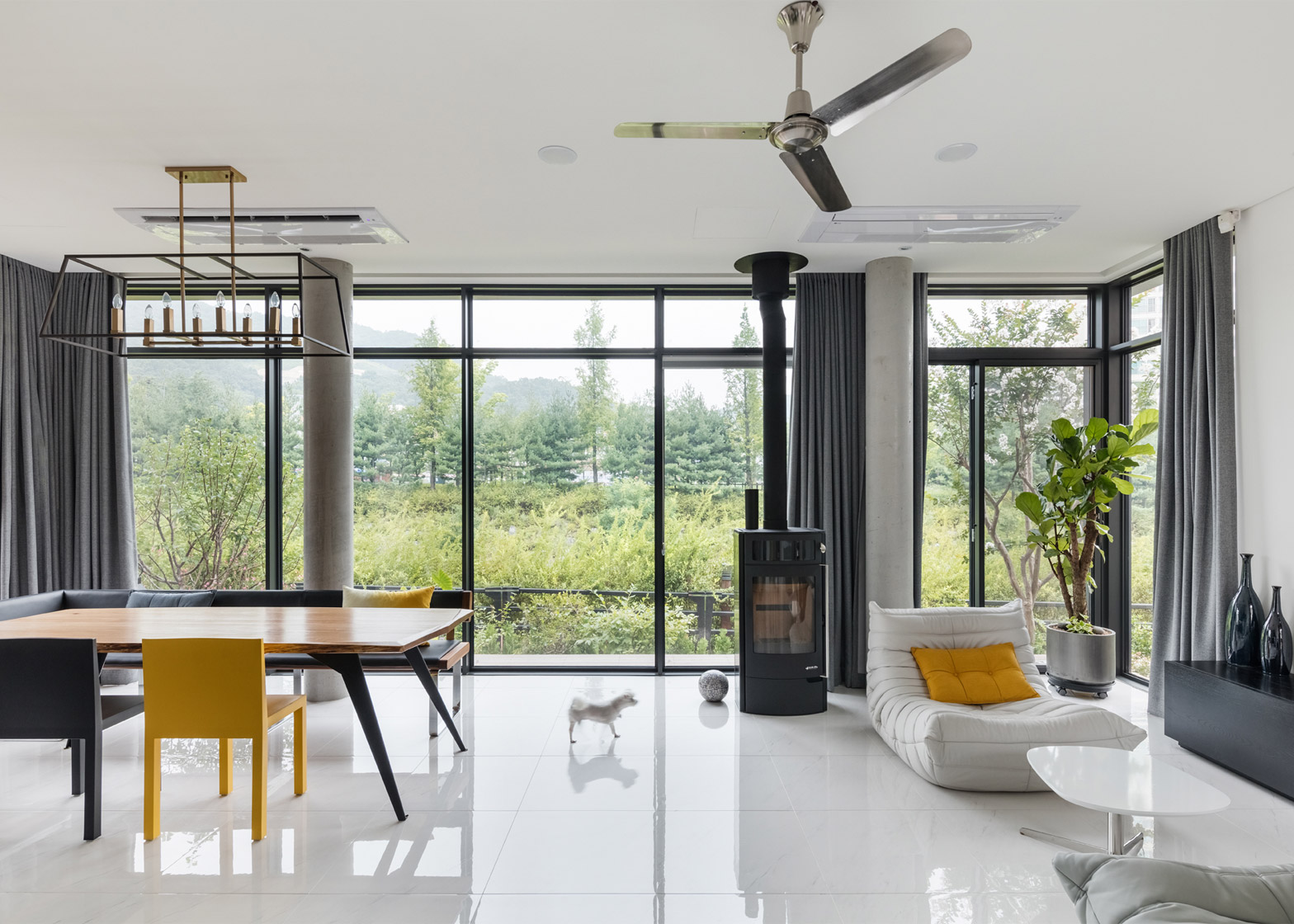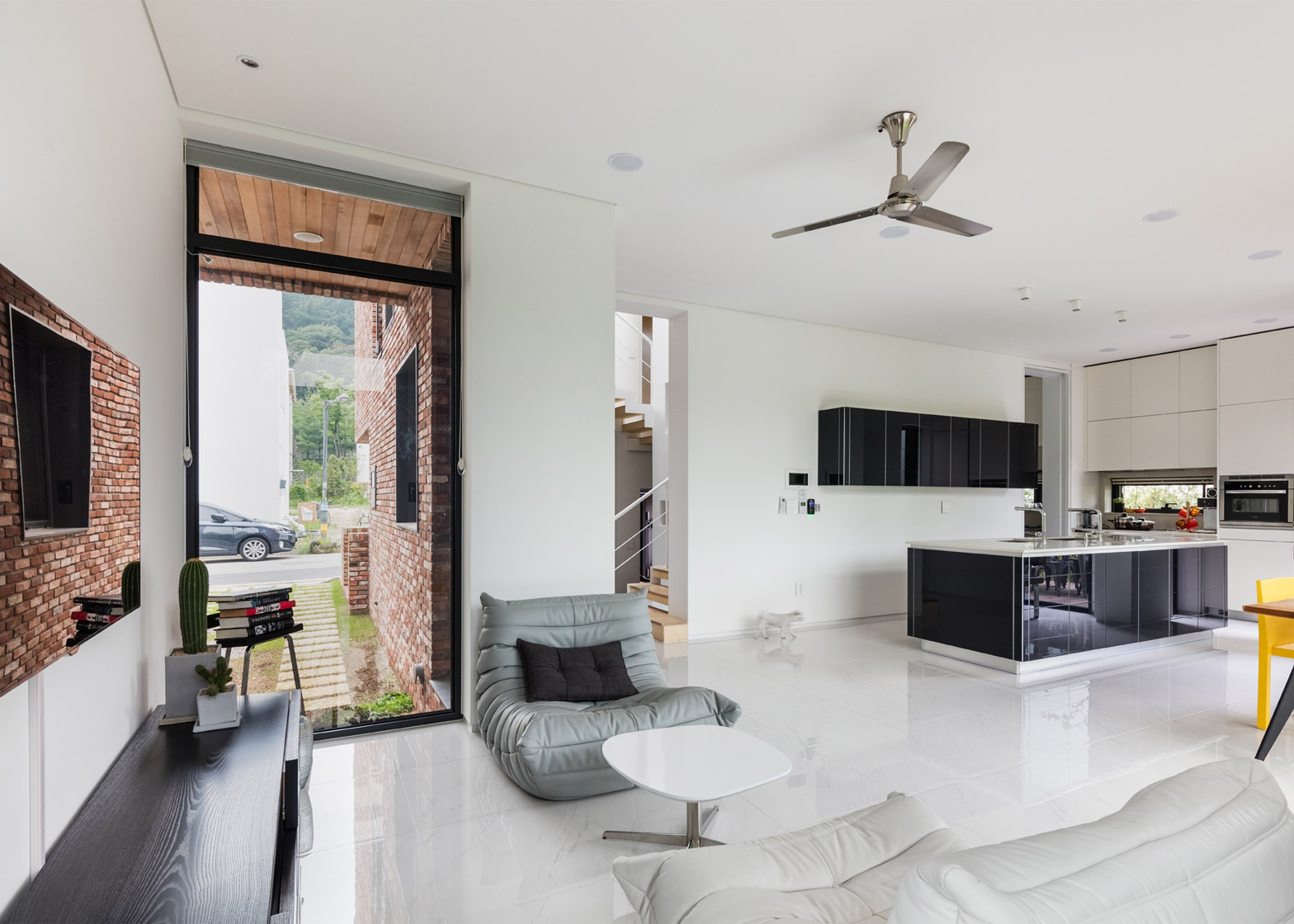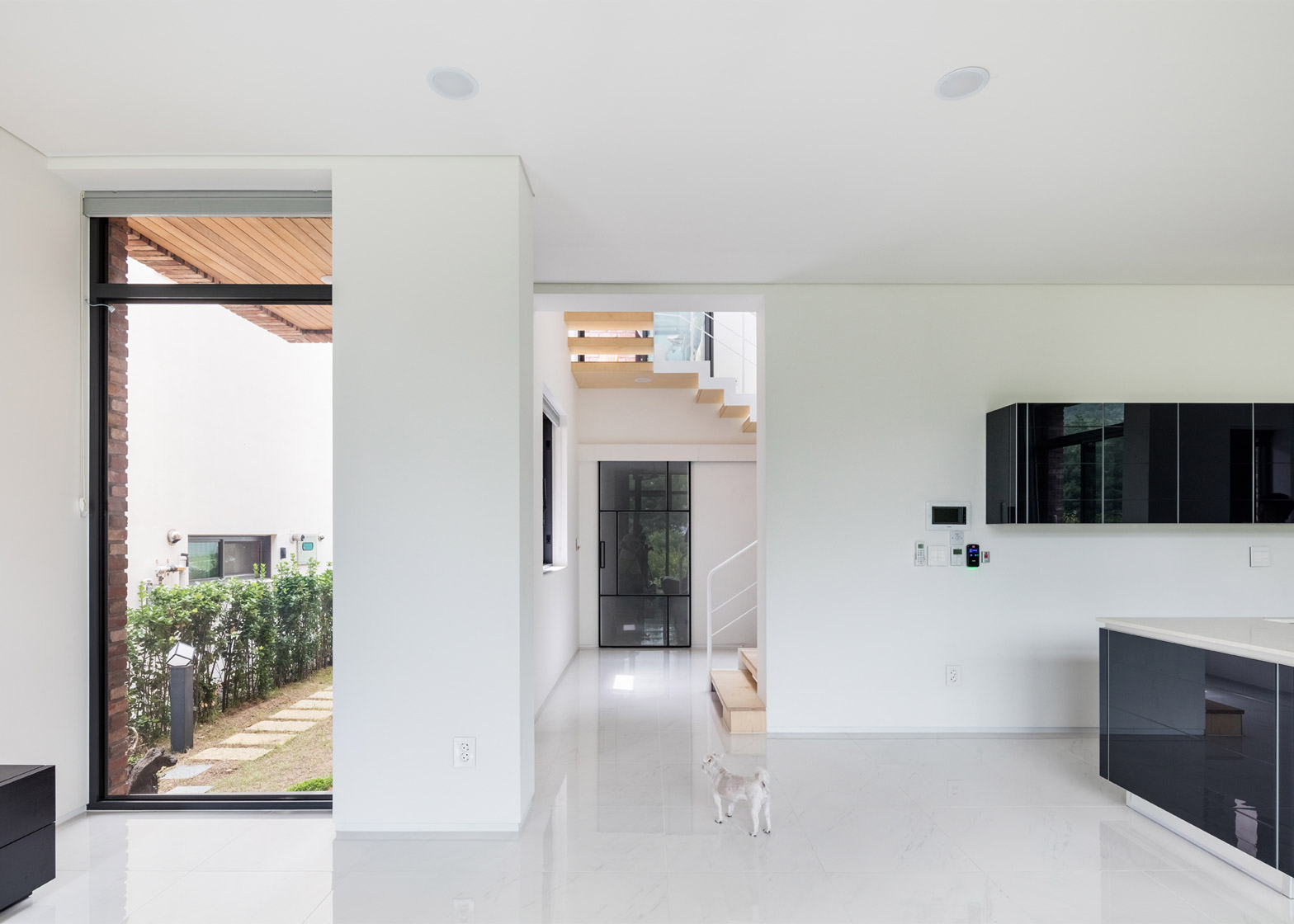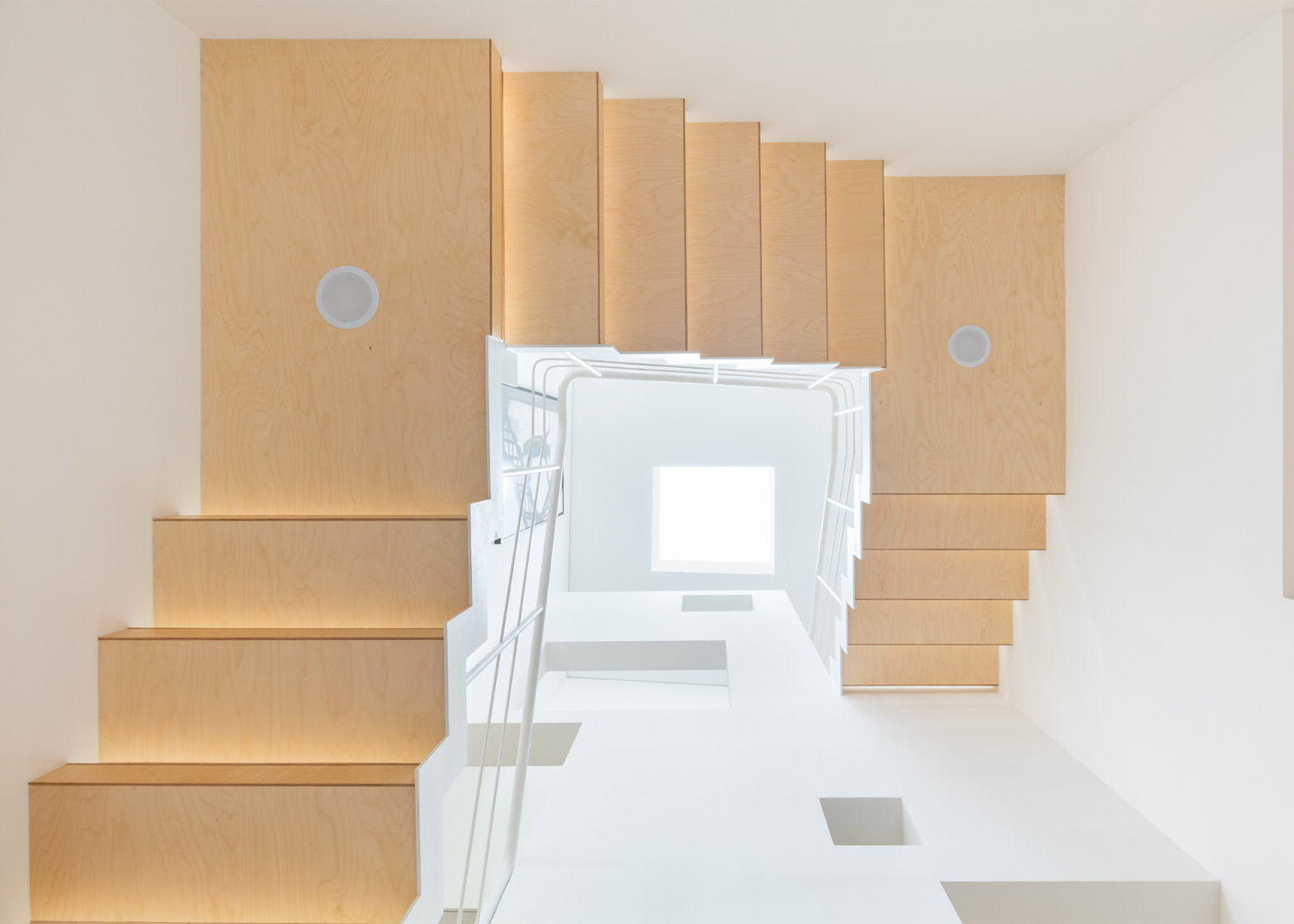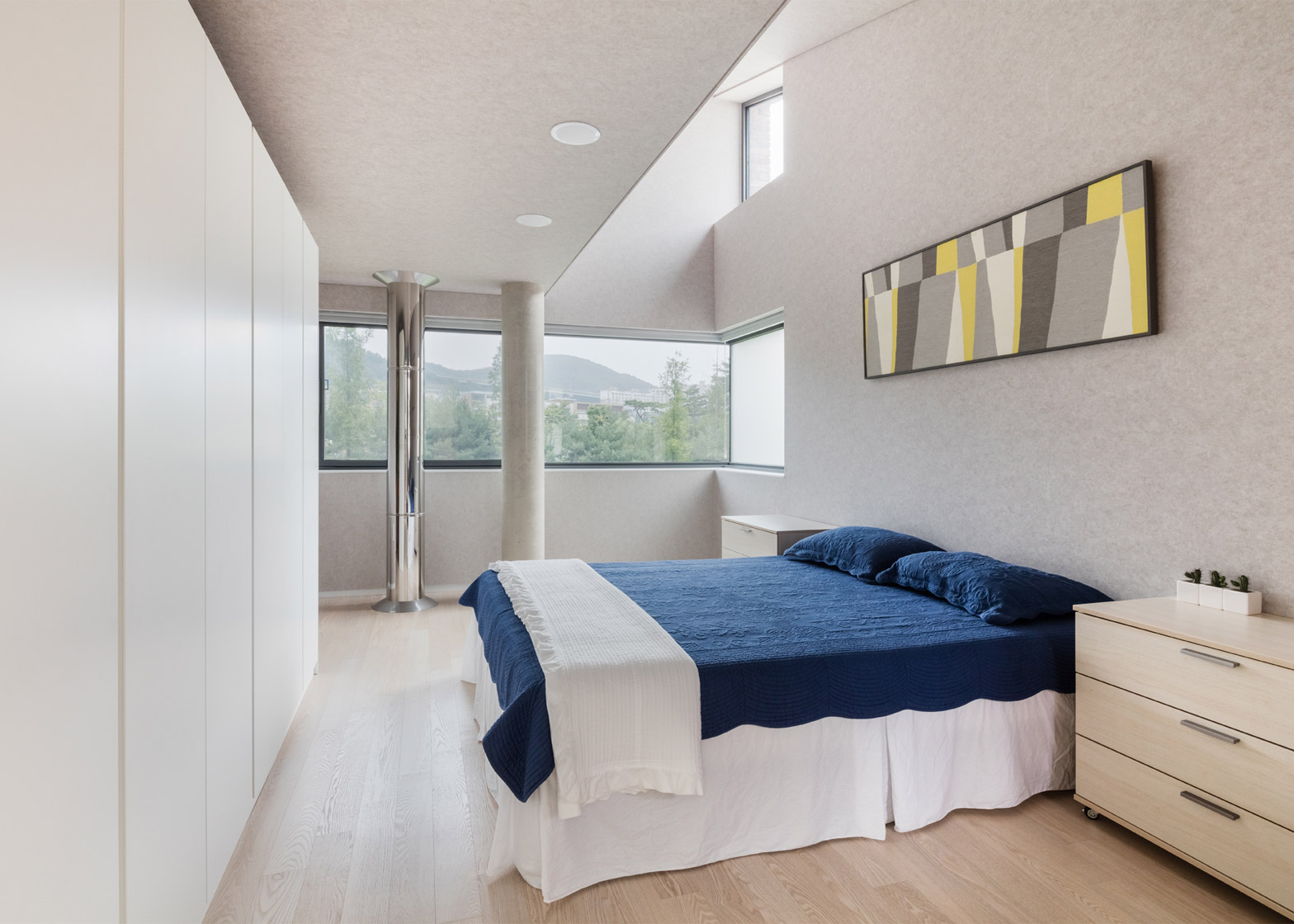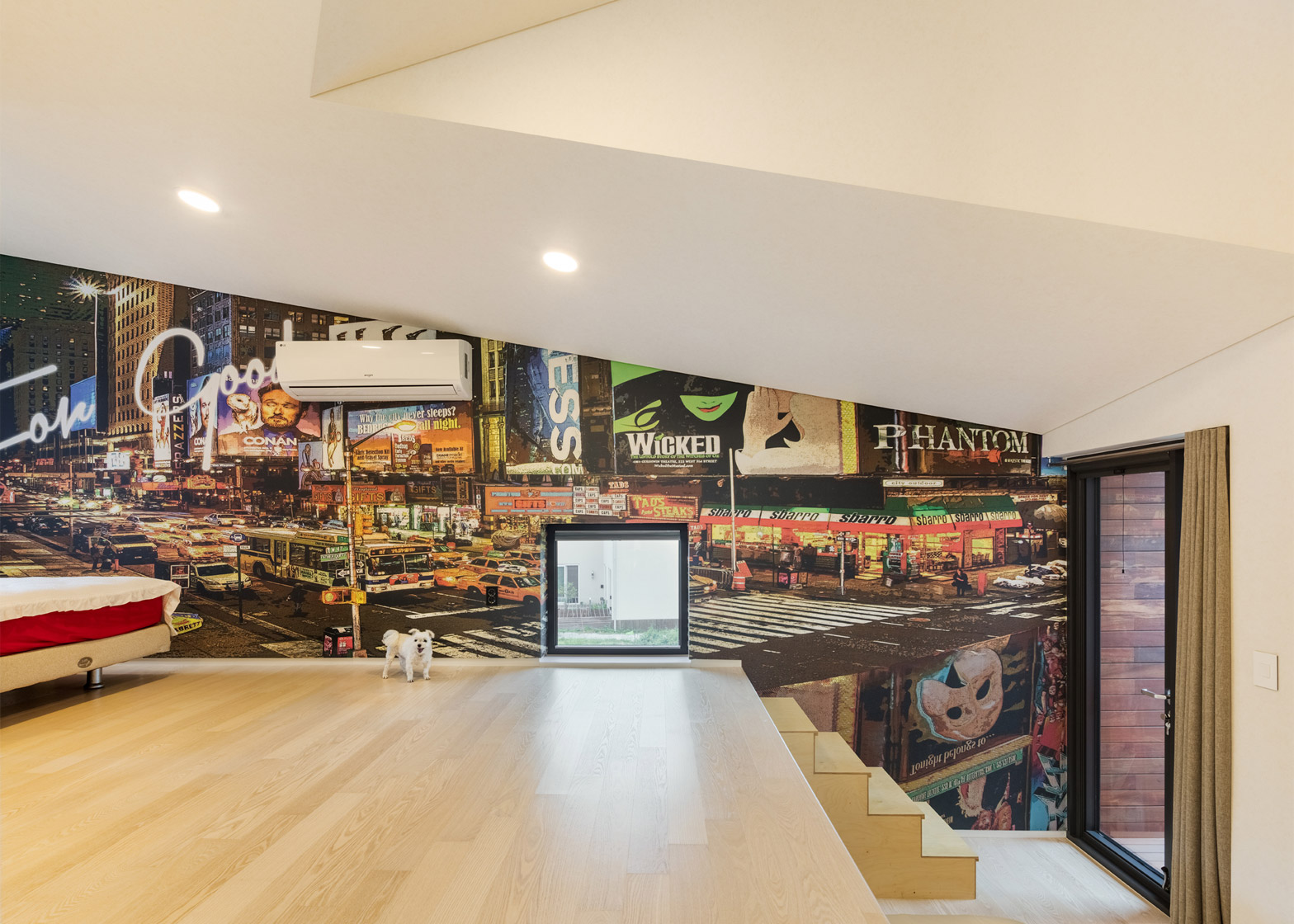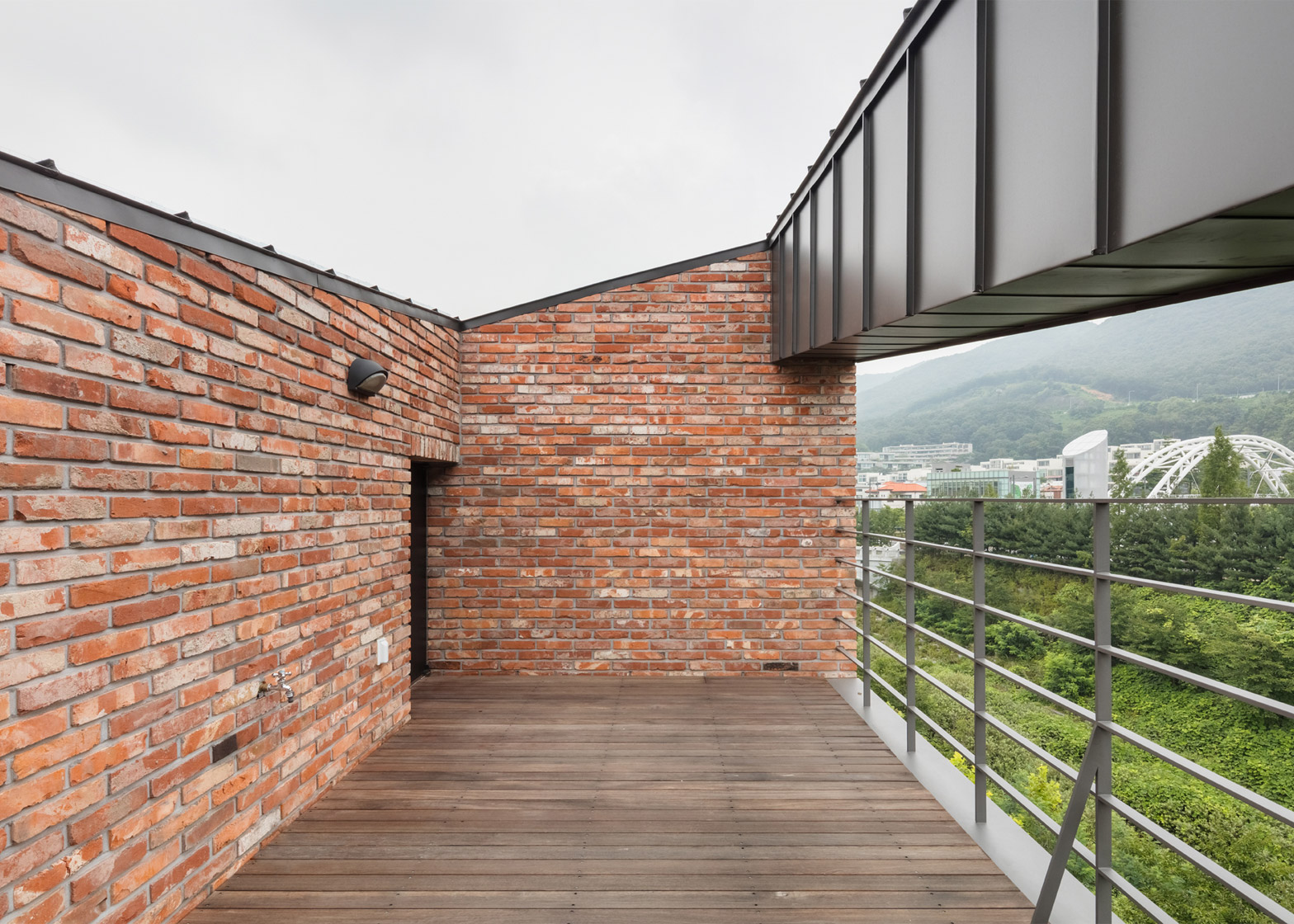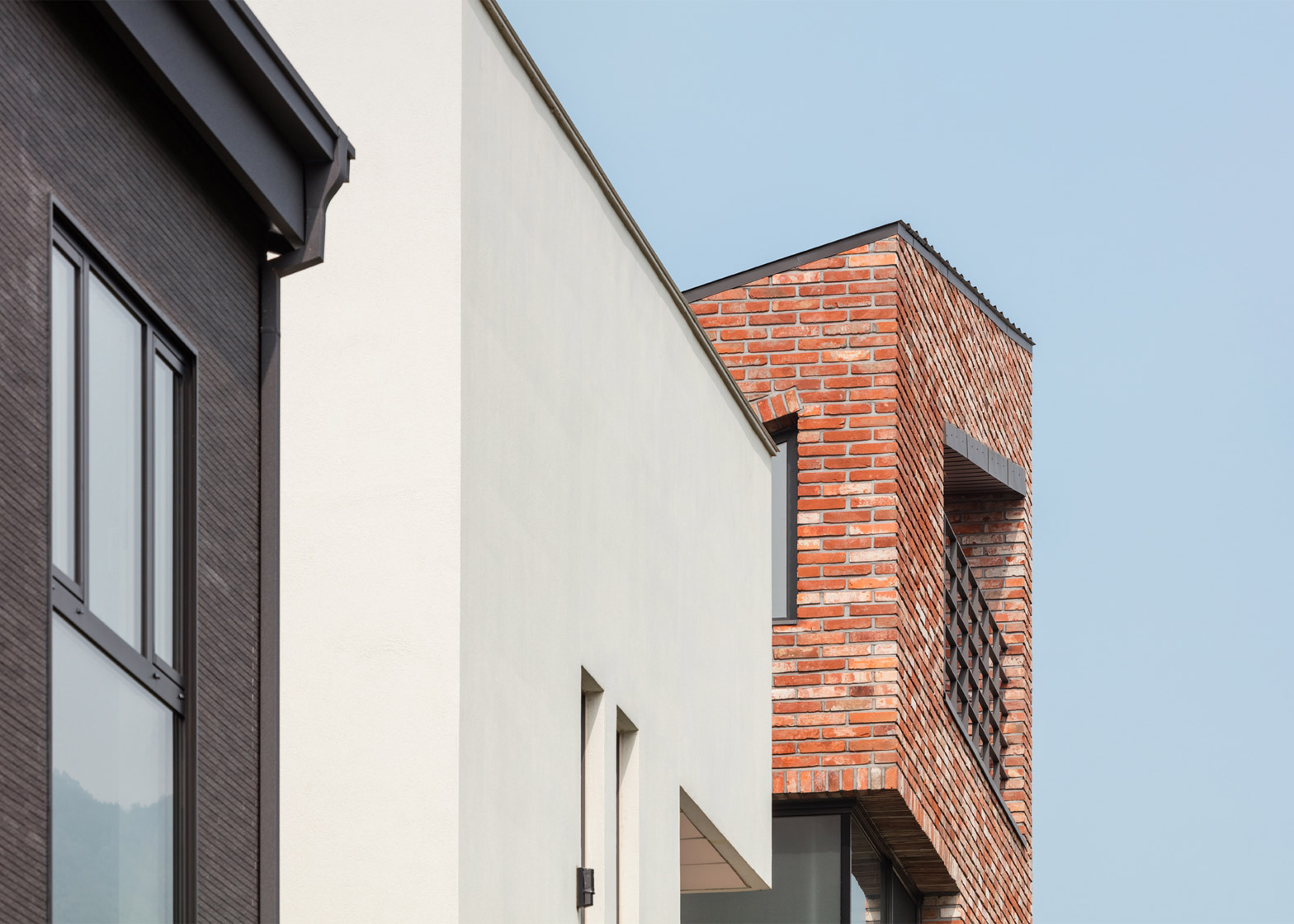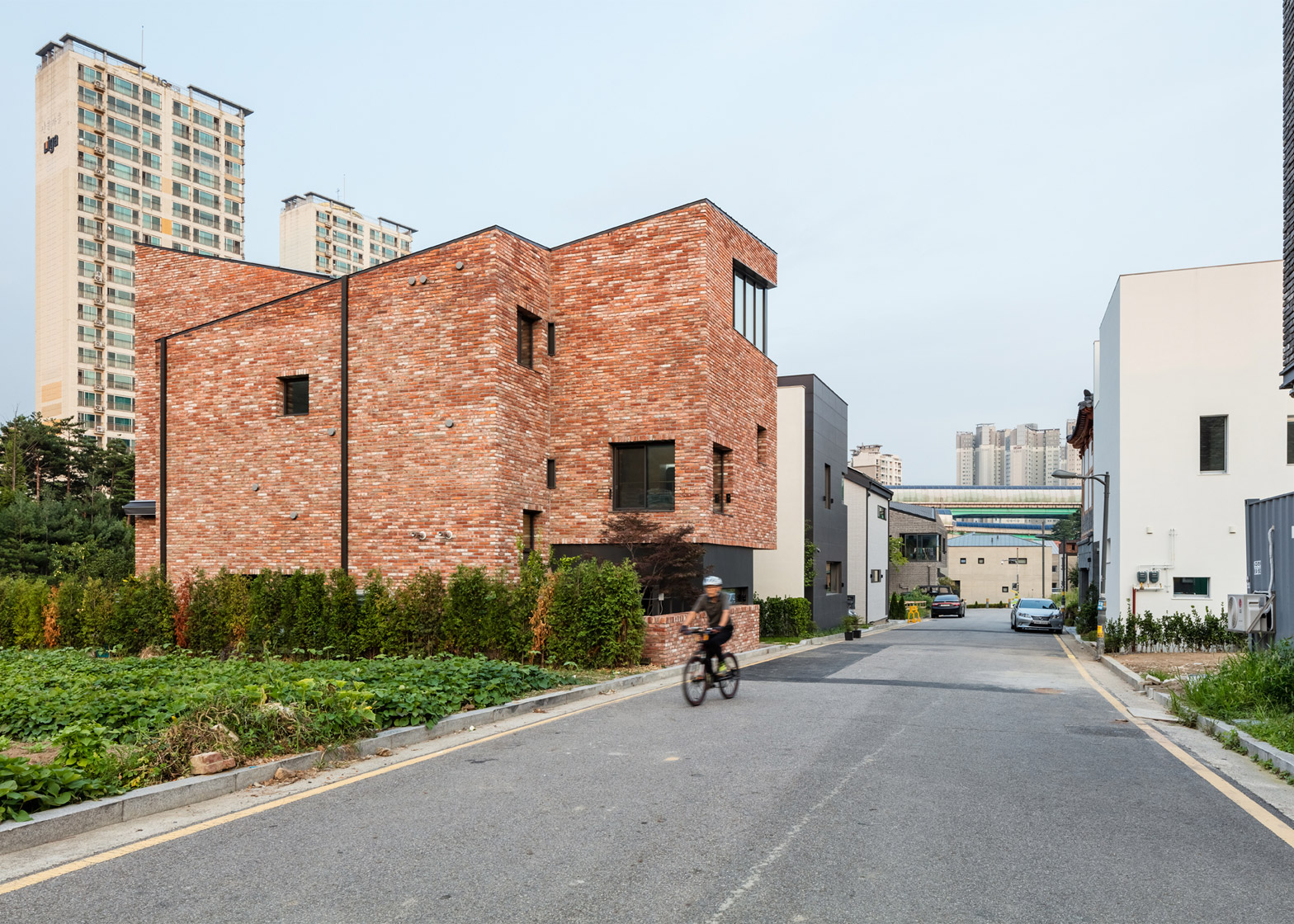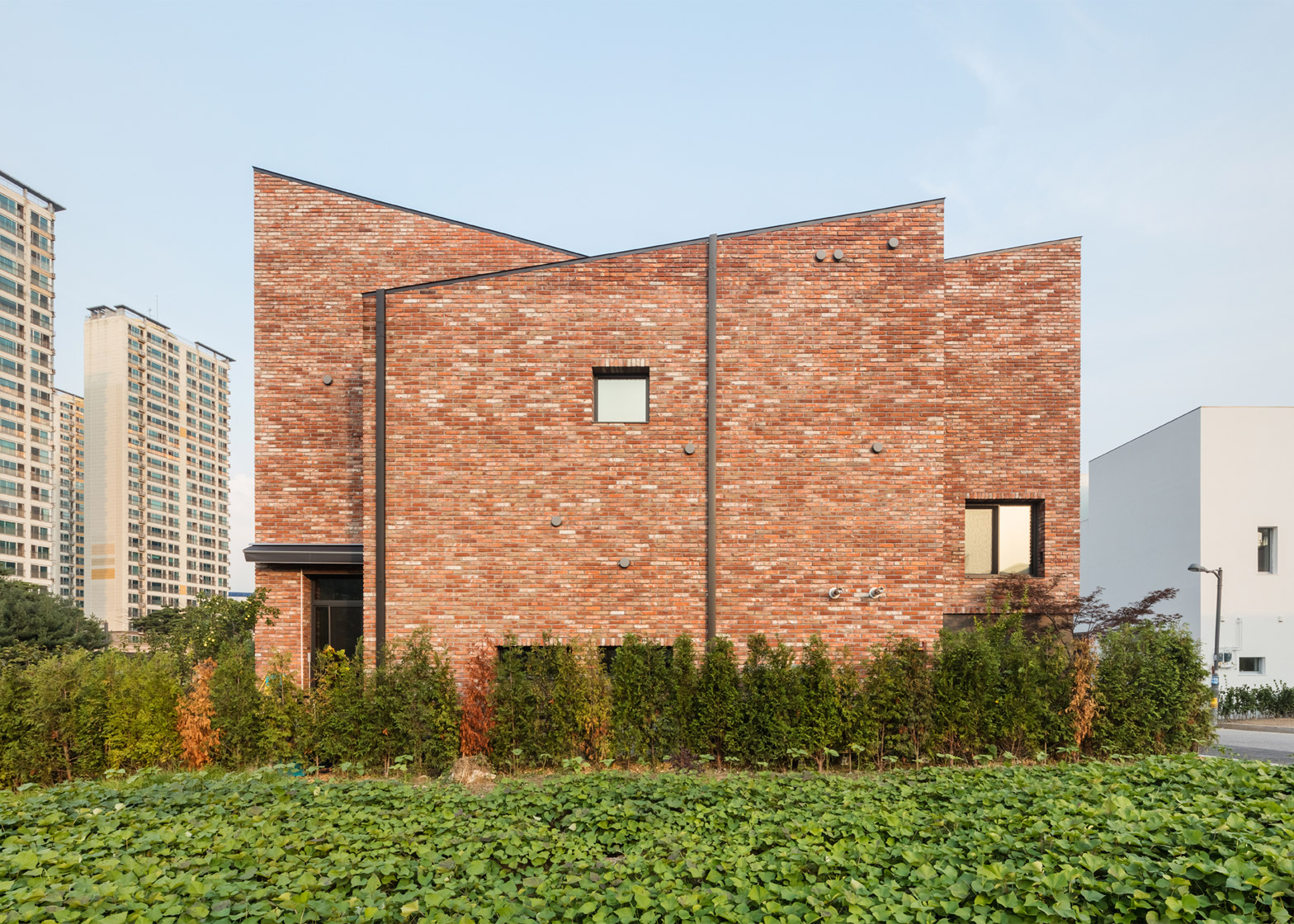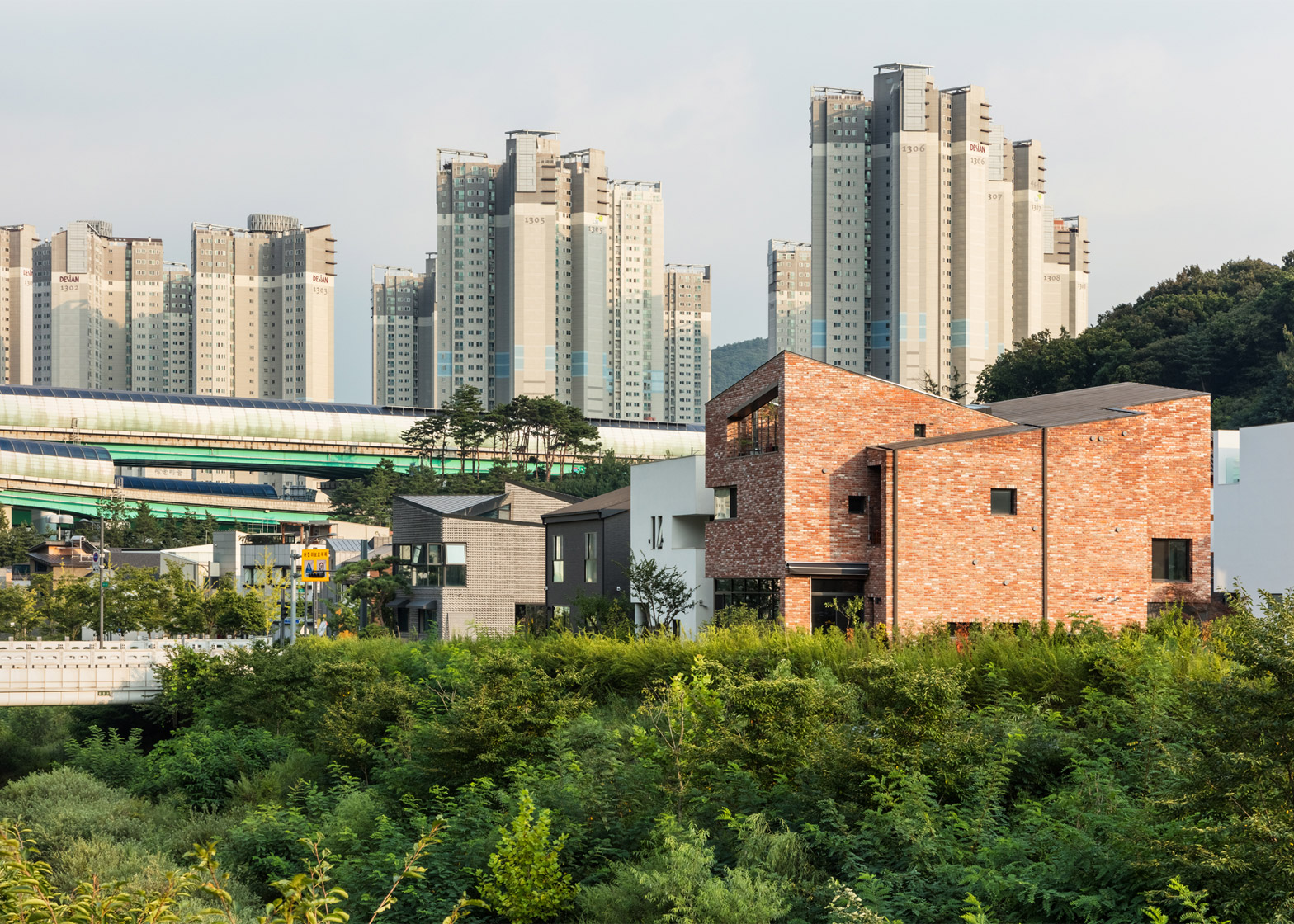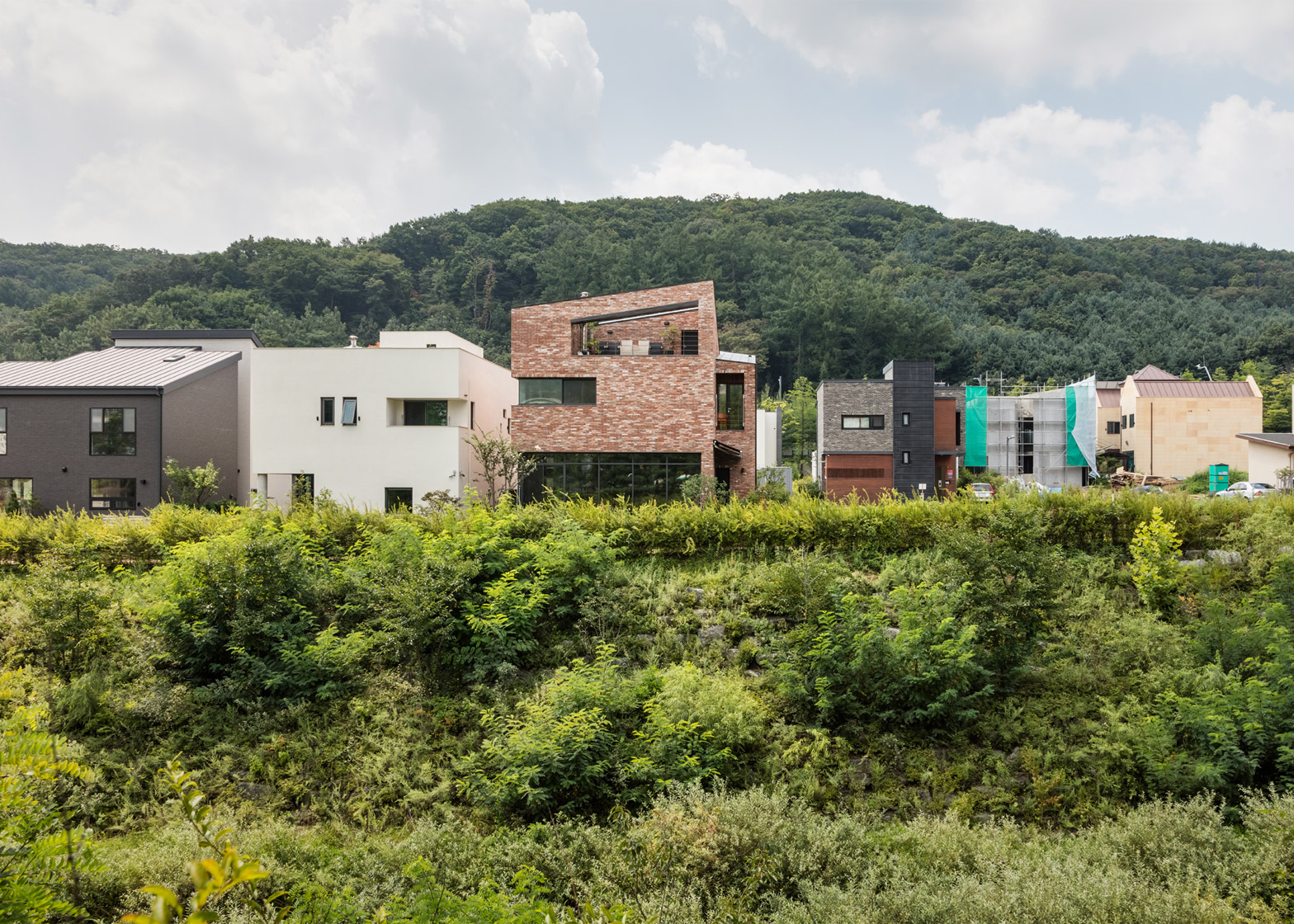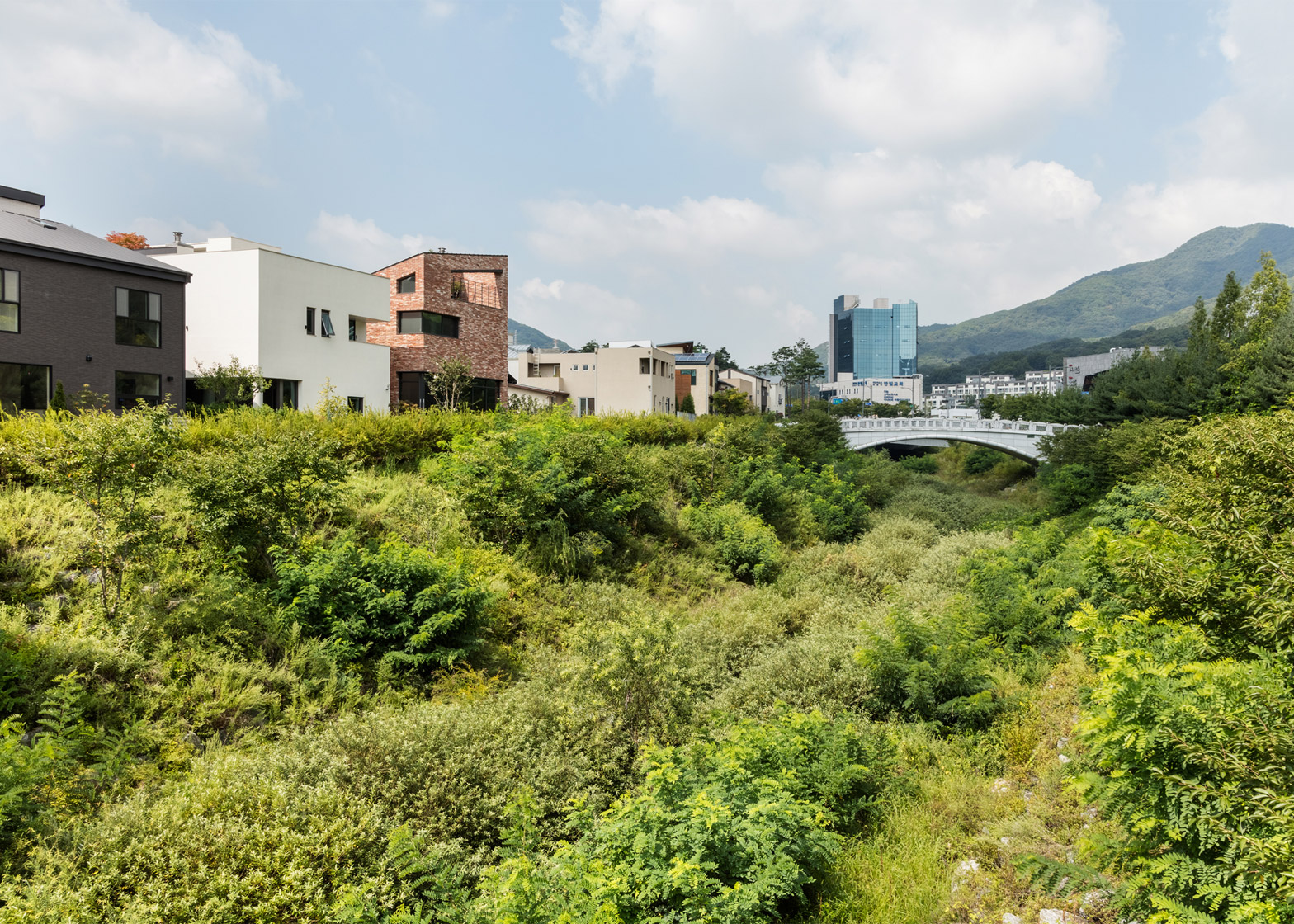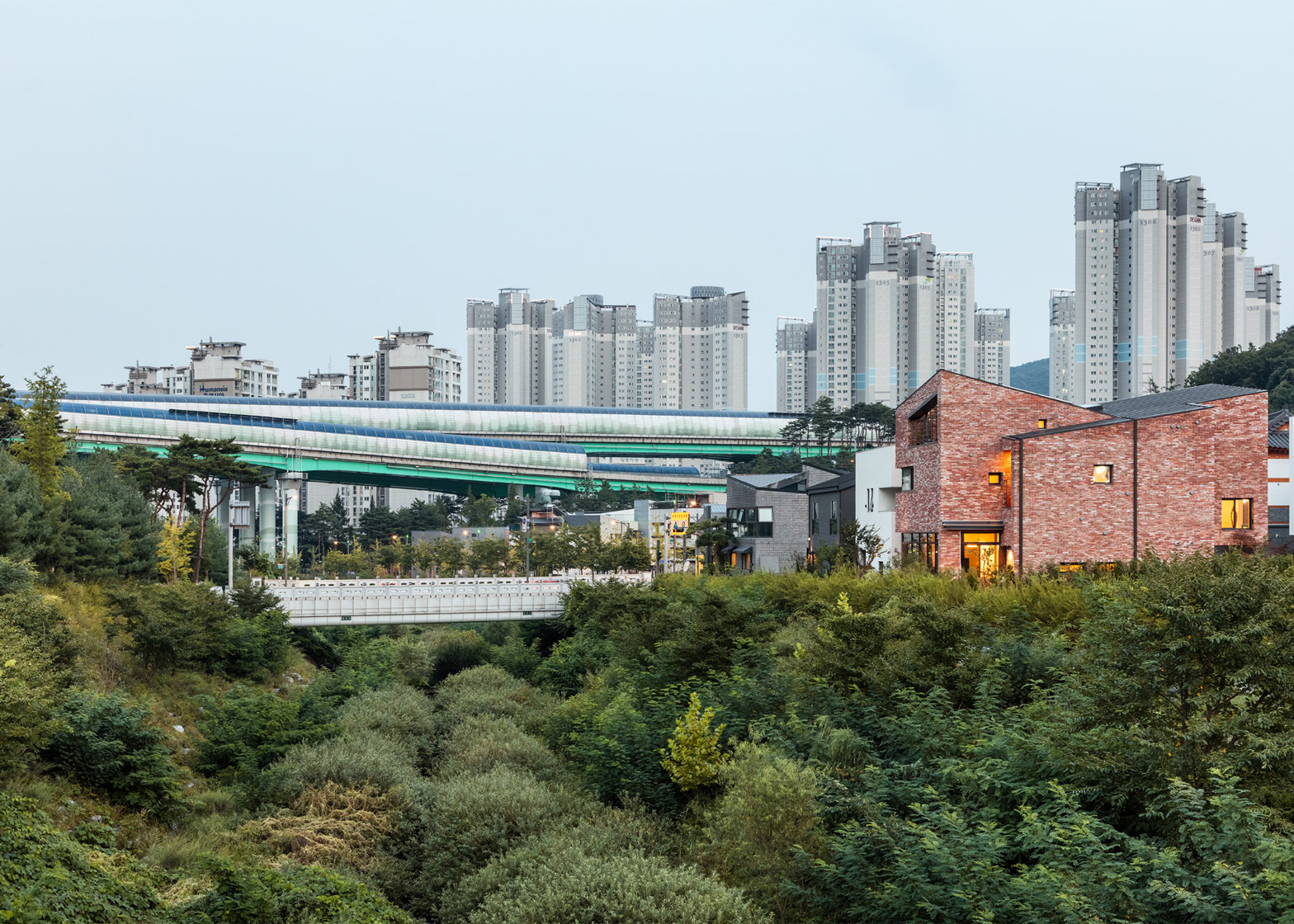Although only 10 metres tall, this red brick house in South Korea by architects AandD is split into 11 different levels connected by a central staircase (+ slideshow).
L House is a detached family home in the new town of Pangyo, close to Seongnam, and is named after its clients, whose surname is Lee.
Situated on a rectangular plot, the building is formed from two main intersecting volumes with roofs angled in opposite directions.
AandD sacrificed exterior space at ground level to create a series of voids inside the building and terraces around its edges.
Its interior is divided into a series of split levels that each serve a different function.
"These layers often overlap each other while creating a bridge between the gaps," said AandD designer Jaeyoung Kim. "They are sometimes divided, withdrawing the individuals within their inner space."
A stairway connecting these levels winds up through the centre of the house, creating an almost continual route from a sunken garden to the rooftop.
"This stairway space plays an important role as the common area to communicate different interior spaces and situations that are piled up in a limited area," said Kim.
A large white internal wall reaching up to the top of the house divides the circulation space, but is punctured with different-sized openings.
Windows in the external wall opposite are similarly mismatched in size. The stairs and landings are built from plywood panels that contrast with the predominantly white interior.
The largest single level accommodates the open-plan kitchen, dining and living area at the back of the house.
It features full-height glazing to the north, offering views of the nearby forest, Woonjung river and Cheonggye mountain.
Down from this level is a library and study area, with a herringbone-patterned wooden floor and exposed concrete walls.
This leads out to the sunken garden, which is lower still and features minimal planting within its high walls.
Climbing up from the entrance hall, the daughter's room to the south is reached first. The master suite is next, facing out the other way, followed by the son's bedroom on the west side.
According to the architects, the stairway provides "a semi-outdoor space so that each family members can experience their own entrance gates".
Further up still is a spare attic room, more storage space and finally the decked rooftop, which also looks out to the countryside.
The reinforced concrete structure is clad in red brick to contrast with the minimal interior.
"Satisfying both opposing style preferences from different family members, the exterior design turned out to be a comfortable brick house providing a relaxing environment versus the modern interior neatly composed of contemporary forms," said Kim.
Other houses with similarly complex internal layouts include a property in Philadelphia with a glazed interior wrapped in a curved brick facade and a home in Osaka that is up on crooked stilts.
Project credits:
Lead architect: Joongkeun Kim
Project team: Sangwoo Gu, Sooyong Hwang, Jaeyoung Kim
Structural engineer: Harmony Structure and Engineering
Construction: Jarchiv

